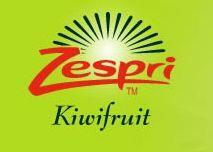
Zespri's 2011 annual meeting covered a number of key issues for the country's kiwifruit industry, including the threat posed by the vine-killing disease Pseudomonas syringae pv. actinidiae (Psa) and a recap of the 2010/11 season.
Some 300 shareholders attended the meeting in Tauranga, the first to be held since the outbreak of Psa in the country in November, with CEO Lain Jager outlining how Zespri was managing resources to prepare for the disease's impact.
'The fact is we still don't know how Psa will impact on our business, but there is a clear downside potential,' he told shareholders. 'It continues to spread, and the disease may well have a significant impact on production in coming seasons.
'We have dramatically re-prioritised resources and directed them into a significant global Psa research and development programme,' he added.
Zespri chairman John Loughlin noted that the group needed to strike a balance between 'decisive urgency' to ensure that it had a future, while ensuring that urgent actions do not compromise that future.
'We are confident that a long-term viable solution will be found to Psa in the next two to four years,' he said. 'Once the solution is found, Zespri needs to be in the position to rebound quickly, because there remains hug opportunity for the industry to meet its long-term goal of growing exports to NZ$3bn by around 2025.'
Looking back at the 2010/11 campaign, Loughlin said that returns to growers had been satisfactory, given the challenging economic environment, with total returns up 4 per cent to NZ$883.3m.
Average per-tray Orchard Gate Returns to Zespri Green growers were NZ$4.21 per tray, meaning that, on a per hectare basis, returns to Green growers were up 9 per cent.
However, Loughlin revealed that Zespri's net profit had nosedived from NZ$25.9m last year to NZ7.3m, primarily the result of a NZ$12.9m contribution to the Psa response, as well as increasing loyalty payments to growers.
Looking ahead to 2011/12, Loughlin warned that the economic environment was unlikely to be any more favourable, insisting that the united structure of the country's kiwifruit industry would be the 'cornerstone' of supporting returns to growers.
The first forecast returns for 2011/12 were also revealed at the meeting, with all categories expected to fall on a per-tray basis compared with last year, although high productivity could mean that growers will still get per-hectare returns similar to those received in 2010/11.






No comments yet